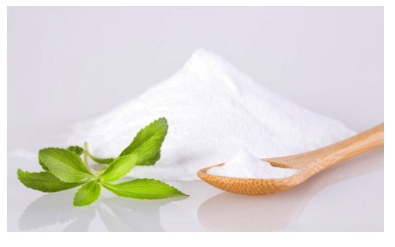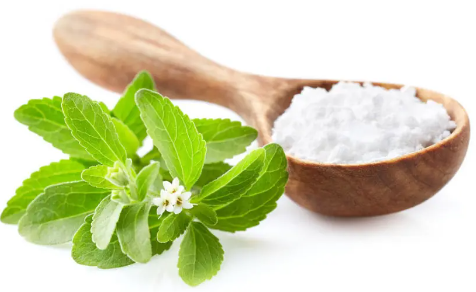Inulin is widely distributed in nature and is a reserve polysaccharide in many plant species, mainly derived from the roots and stems of natural plants such as onions, garlic, chicory, and Jerusalem artichoke. With the improvement of modern people's living standards, the food industry is currently facing significant challenges. While meeting the requirements of consumers for a healthy diet, it also needs to meet their corresponding nutritional needs. Inulin has good water solubility, good color, suitable molecular weight, and similar powder characteristics to flour. Adding inulin to flour increases the content of dietary fiber in the product and improves its quality.

01
Rheological properties and processing performance of dough
Directly affected by water form and distribution Short chain, natural, and long-chain inulin were added to medium gluten flour, and the effects of different polymerization degrees of inulin on the water migration behavior of dough with different fluidity were studied using differential calorimetry (DSC) and nuclear magnetic resonance (NMR). The DSC results showed that the moisture content of tightly bound water showed a positive correlation with the addition of different degrees of polymerization of inulin, while the moisture content of free water and weakly bound water in the dough was the opposite. The results of NMR indicate that the interaction between water and macromolecules in dough results in the migration of water from weakly bound water to free water and tightly bound water. Free water in dough is more significantly affected by short chain inulin and natural inulin, while tightly bound water is mainly affected by long chain inulin. All three degrees of polymerization inulin affect weakly bound water. After adding different degrees of polymerization of inulin to the dough, Yang Duan also found a similar pattern of water transfer. In general, with the addition of inulin, the water absorption of the dough decreases, which significantly prolongs the formation time of the dough, improves its stability, increases its resistance to extension and viscoelasticity, increases its gluten and strength, and reduces its kneading resistance. The medium gluten flour commonly used in the preparation of Mantou was also taken as the research object. After adding short chain inulin to the medium gluten flour, the farinographic and tensile properties of the dough were studied, and the change trend of various rheological parameters of the dough was investigated. Research has shown that the elongation resistance, stretching ratio, and stretching energy of dough increase with the addition of short chain inulin. When the amount of short chain inulin added is 7.5%, all indicators reach their maximum values and the gluten strength is enhanced.

02
Appearance attribute of short chain inulin on Mantou
The impact of structural characteristics and aging process Short chain inulin was added to Mantou, a traditional staple food in China, to investigate its impact on the appearance, structural characteristics and aging process of Mantou. The experiment found that with the addition of inulin, the specific volume, size and sensory evaluation score of Mantou increased. When the amount of inulin was increased again, the above indicators began to decrease. When the amount of inulin was 5%, the score was the highest. The author evaluated the color index of Mantou by the L * a * b value of the colorimeter, and pointed out that the addition of short chain inulin in an appropriate amount improved the structural characteristics of fresh Mantou, but also accelerated the aging rate of Mantou. This paper reveals the important factors that affect the aging rate of Mantou during water migration. This study provides a theoretical basis for the application of inulin in Mantou. Mantou with inulin has better functionality and nutritional value. Simulate the fermentation process of dough using a fermentation rheometer and study the effect of different amounts of natural inulin on the fermentation rheology of dough. The author conducted a response surface center combination design based on the results of a single factor experiment, and analyzed the impact of different factors such as the amount of inulin added on bread baking quality through weighted comprehensive scoring. Research has shown that increasing the amount of inulin added is beneficial for increasing the total gas production of dough, reducing the maximum swelling height, and significantly shortening the time for dough to appear hollow. And it is suggested that this may be due to the presence of a certain amount of monosaccharides and oligosaccharides in inulin, and the addition of inulin dilutes the gluten protein content, hindering the formation of a gluten network structure and increasing the dough's resistance to elongation. The experimental results showed that adding inulin reduced the hardness of bread, but had no significant effect on the elasticity of bread. As the amount of inulin added increased, the specific volume of bread slightly increased. The highest sensory evaluation and weighted comprehensive score (94.17) was obtained when adding 5.0% inulin, indicating a soft texture, good taste, uniform and small internal pores in the bread. The effect of different dosages of inulin on the rheological properties and tensile properties of flour powder Fan Wenjing also focused on bread as the research object, using a powder analyzer and a stretcher to investigate the effects of different amounts of inulin on the flour powder properties and rheological properties. She also used a texture analyzer to evaluate the texture characteristics of bread after adding inulin, and conducted sensory evaluations. The results showed that the rheological properties of the flour dough were improved after adding inulin, the viscosity increased, and the formation time and stability time of the dough increased. The stretching curve of dough, including the dough agent, stretching resistance, maximum stretching resistance, and stretching ratio, first increases and then decreases, without showing a certain increasing trend with dough elongation. The addition of inulin increases the water holding capacity of bread and reduces its hardness. The bread with the best comprehensive sensory score is made when the addition amount is 6%. Analysis of rheological properties Studied the rheological properties of products made with added inulin and wheat flour as the main raw material. The author added 5%, 10%, 15%, 20%, and 25% inulin instead of wheat flour, and found that the rheological parameters (dough binding ability, dough formation time, dough stability, weakening degree, etc.) changed. Among them, low amounts of inulin (5%, 10%) lead to a decrease in the water binding ability of the dough, while high amounts of inulin (15%~25%) enhance the water binding ability of the dough. The addition of inulin also prolongs the dough formation time and dough hardness. It is analyzed that inulin may affect the formation of gluten network, resulting in an impact on the viscoelasticity and strength of the entire dough, as well as the interaction between gluten. At the same time, the author also examined the quality of bread made with different amounts of inulin added and conducted sensory evaluation tests. It was found that when the amount of inulin added exceeded 10%, the quality of bread decreased and sensory satisfaction decreased. The bread made with a 5% addition has a high acceptance of sensory quality. Research has shown that adding an appropriate proportion of inulin can maintain the desired product characteristics and effectively control the color and texture quality of bread, making it an effective method for producing functional wheat flour bread. This is generally consistent with the research results of Rubelab et al. on preparing dietary fiber rich bread using inulin. Using Fourier transform infrared spectroscopy to analyze the structural organization of bread after adding inulin, the interaction between inulin and the main biopolymers inside the substrate is revealed, revealing that the reaction between inulin and gluten protein has a more significant impact on the dough structure. The effect of adding inulin on extending the shelf life of sugar free crispy biscuits Liu Chongwan conducted an accelerated experiment to investigate whether adding inulin can prolong the shelf life of sugar free crispy biscuits. As time goes on, the moisture content of sugar free crispy biscuits gradually increases, and the higher the temperature, the faster the moisture content increases. Inulin can significantly inhibit the increase of moisture content in crispy biscuits. The author added 3% inulin to flour and tested the moisture content changes of sugar free crispy biscuits at different temperatures of 30 ℃, 40 ℃, and 50 ℃. The shelf life of biscuits at each temperature was studied, and the shelf life of biscuits at room temperature (25 ℃, T=298K) was derived. The experimental results show that the shelf life of crispy biscuits can be extended from 90 days to 150 days after adding 3% inulin. He added different proportions of inulin to the flour and investigated the effects of inulin on the texture characteristics, tensile properties, sensory properties, water holding capacity, and texture characteristics of the dough. Research has shown that the water absorption rate of dough significantly decreases with the increasing amount of inulin added, and the dough formation time and stability time are significantly prolonged. Inulin continuously increases the water holding capacity of biscuits, which can improve the sensory quality and texture characteristics of crispy biscuits. Krystyjan et al. used inulin instead of 20% to 50% fat in biscuits to investigate how this preparation process would alter the rheological parameters and structural properties of the dough and biscuits. It was found that replacing 20% fat with inulin did not worsen the sensory evaluation of cookies and only had the smallest impact on texture. This formula reduces the fat content of the product while increasing sugar content and calorie value. Furthermore, compared to the blank, even though the polyphenol content and activity of the product decrease, the soluble dietary fiber content increases. After the fat replacement amount exceeds 20%, the hardness of cookies will be too high, and the polyphenol content and antioxidant activity will be significantly reduced. Examine the effects of four sources of dietary fiber, including inulin, on the rheological properties and nuclear structure of high-fat and high sugar biscuit dough. The main results indicate that adding inulin during the baking process enhances the dough's extensibility, thereby improving the quality of cookies and increasing the total dietary fiber content of cookies.
Shaanxi Huike Botanical Development Co., Ltd. a integrated enterprise which is focus on natural products, plant extract related products and services.We mainly focus on pharmaceutical, functional food, Freeze-dried powder,Natural Pigment,Homology of medicine and food,beverages and other business services.
For more information about inulin, please contact us!
Email:marketing@huikes.com
2024-05-09
Shaanxi Huike Botanical Development Co., Ltd.




